
Air Conditioning Consultants Based in Coventry
Covering the surrounding Areas
Trust Chillaire as your local air conditioning consultants in Coventry. Our team is dedicated to providing you with expert advice and high-quality services tailored to your needs. We can arrange consultations by phone or email to in-person ones to match your availability.
Our air conditioning consultants in Coventry will advise you on the best solution and are more than happy to answer any queries you may have. If you need air conditioning advice or require assistance with the design, planning, and installation of heating, ventilation, humidification, or other related products and services, our experts are here to help.
Our Process
Our consultations are designed to meet your unique requirements. Our clients benefit from:

Personalised Consultations
Our consultants take the time to discuss, assess, and fully understand your requirements. We believe in providing solutions that are tailored to your specific needs and budget.

Comprehensive Solutions
From air conditioning systems to heating, ventilation, and more, we have the expertise to address all your indoor climate control needs – there’s no need to meet us halfway.
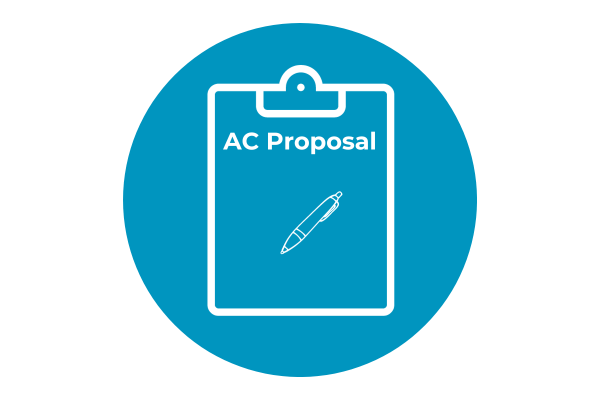
Detailed Proposals
After your consultation, we will provide you a written proposal with all the necessary details, including brochures and equipment data sheets. Our transparency helps you make the right decisions.
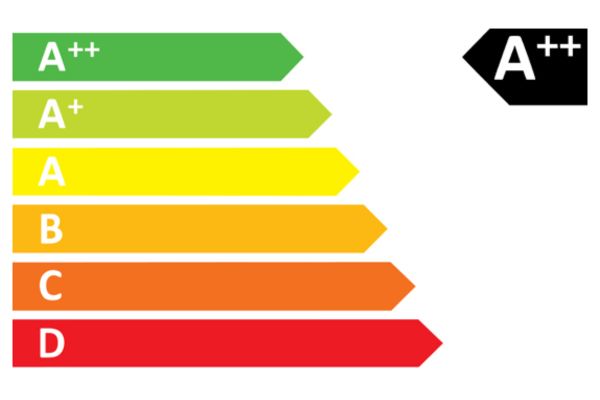
Expert HVAC Consulting Engineers
Our sales and design engineers are fully conversant with the latest energy efficient technology and we always endeavour to offer you the most energy efficient systems.
HVAC Consultants Based in Coventry
Serving the surrounding Areas for 30 years
Our team of HVAC consultants in Coventry and across the Midlands are friendly and professional. With more than 20 years of experience, we have extensive knowledge of the diverse range of air conditioning products and services offered. What sets us apart from our competitors is our strong network of distributors and manufacturers, built on long-lasting relationships.
If additional expertise is required, our network of associated tradesmen, including building contractors, electricians, crane hire services, or steel structural engineers, collaborate with our air conditioning specialists. Our subcontracting companies are always reputable, certified, and qualified professionals we have worked with for several years.
Our HVAC consulting engineers take the time to develop a thorough understanding of your requirements. We conduct full site surveys of your premises, which may involve multiple visits, depending on the project’s size or complexity. When you choose Chillaire’s HVAC consultants in Coventry, you’re choosing experts who are committed to delivering custom solutions for your needs.
Expert HVAC Consulting Engineers
At Chillaire, we take pride in our team of expert HVAC consulting engineers. With our extensive knowledge and experience, we are no stranger to the latest energy-efficient technologies. As such, we always endeavour to provide you with the most energy-efficient systems available.
Air Conditioning Requirements
Creating the perfect indoor climate is a complex task. Several factors determine which HVAC equipment is the best fit for your needs. To navigate this complexity, we recommend seeking guidance from our expert HVAC consulting engineers.
Here’s a step-by-step guide to selecting the right HVAC system for your space:
1. Define Your Indoor Climate Control Goals
To what extent do you want to control the indoor climate?
Decide on your primary goals. Are you looking for cooling, ventilation, heating, or a combination of these? This will significantly narrow your HVAC options and determine the type of system that suits your needs.
2. Assess Your Space
How many rooms or areas do you need to control?
Determine the number of rooms or areas that require indoor climate control. For multiple rooms, consider whether it’s possible to connect several indoor units to a single outdoor unit. Your HVAC system operates to control every room, not just the ones you use.
3. Identify the Type of Space
What kind of rooms or areas are you dealing with?
Consider the specific type of lot. Commercial buildings, such as shops, offices, restaurants, warehouses and factories may require a different HVAC system tailored to its unique requirements.
4. Calculate Capacity Needs
What capacity is required?
Ensure the system’s capacity matches your space. An HVAC system with the wrong capacity can lead to issues like drought, fluctuating temperatures, and high energy bills. Ask our engineers to calculate the capacity, accounting for factors like solar infiltration, lighting, and occupancy.
5. Determine Outdoor Unit Placement
Where should the outdoor unit be located?
Choose an appropriate location for the outdoor unit. It should be placed on a solid base that is easily accessible for maintenance, whether that’s repairs or cleaning, and respect your building’s aesthetic appearance.
6. Consider Indoor Unit Placement
Where should the indoor unit/s be placed?
The placement of your indoor unit impacts model choices. Consider factors like false ceilings, false ceiling voids, available wall space, and whatever is considered must not impact on the unit’s air distribution pattern. There are a variety of indoor fan coil unit options available which will provide the most effective air distribution and delivery of the cooling and heating capacity.
7. Assess Weather Durability
Is the outdoor unit weather-resistant?
Check the outdoor unit’s weather durability, as it affects its lifespan. A reputable, properly installed model could last for 15 years and withstand various weather conditions. However, this is also determined by how well it’s been maintained throughout the years.
8. Explore Air Purification Options
Do you need air purification?
Consider air purification for improved indoor air quality. Filters in indoor units can remove dust particles and kill bacteria. Depending on your needs, you can choose from various levels of filtration for a healthier indoor environment.
Choosing Your Air Conditioning System
Choosing the right air conditioning system may seem daunting, but it doesn’t have to be. Now that you’ve identified your requirements, you’re ready to select the perfect HVAC for your space. If you’re uncertain about your requirements, don’t hesitate to reach out to our experts for guidance.
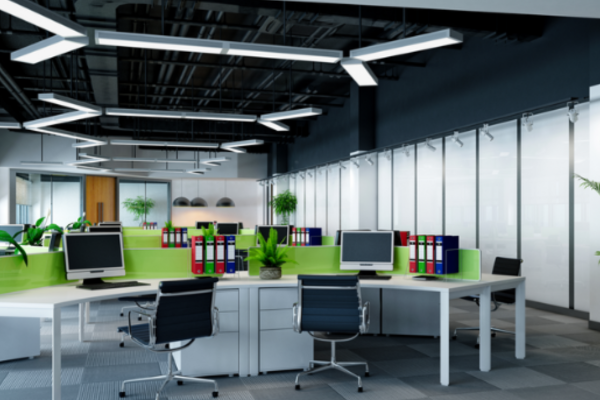
Single Office or Small Space
Recommended system: Heat pump energy efficient inverter wall or ceiling mounted single split system
Description: These systems consist of one indoor unit connected to one outdoor unit. It provides efficient heating and cooling while maintaining individual control.
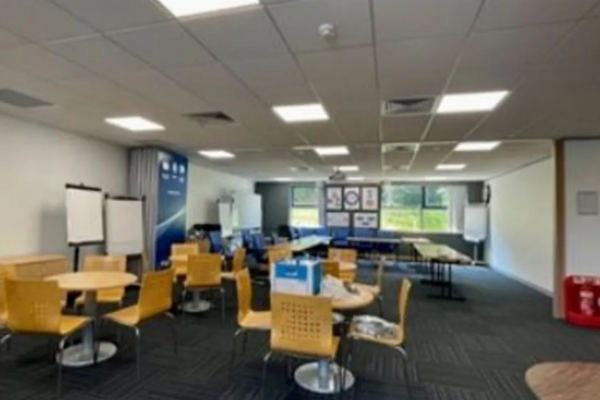
Multiple Offices or a Large Area
Recommended system: VRV or VRF type multi-system
Description: These systems connect multiple indoor units to a common outdoor unit, allowing individual control. These systems are energy-efficient heat pumps.
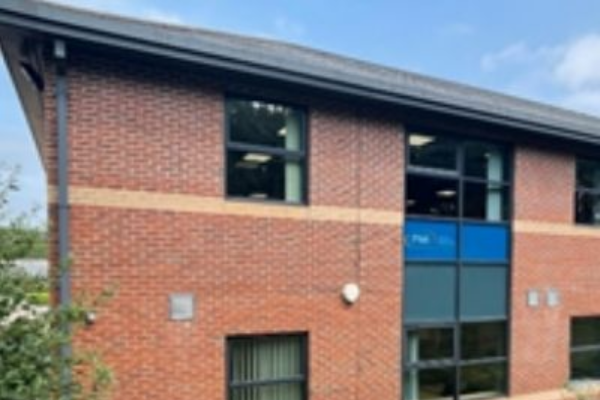
Large Office Block with Mixed Needs
Recommended system: Combination of central rooftop packaged unit with a boiler and radiator system
Description: These systems connect to electrical power, gas supply, ductwork, hot water piping, and control wiring and valves. A central rooftop packaged unit handles cooling and ventilation, while a boiler and radiator system provide heating.
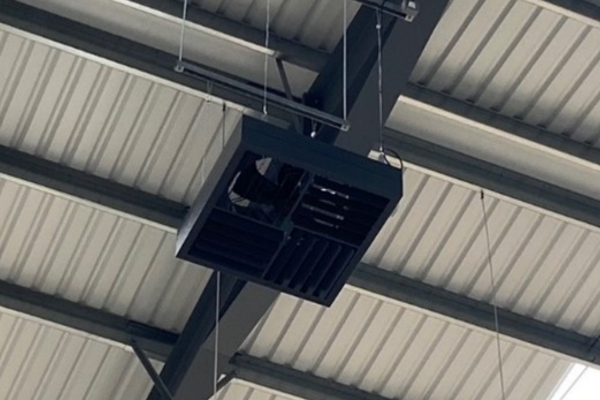
Large Warehouses or Factory Areas
Recommended system: Conventional gas-fired warm air units (floor or ceiling suspended) or radiant tube heaters
Description: These systems are standalone heating systems that don’t require connection to outdoor units or external components. They are cost-effective and efficient options.
Heat pumps are air conditioners which can be used both for cooling and heating. The principle is that it is able to reverse the process of transporting heat from one place to another.
Energy efficiency?
Moreover heat pumps, particularly those that are inverter controlled are much more energy efficient than other heaters. The reason for this is simple: rather than burning a fuel, they rely upon the heat transfer efficiency of the refrigerant gas used, normally R410a, with a co-efficient of performances (COP) of up to 6:1 now available. Because of this heat pumps are up to six times more energy efficient than other heaters.
Heat pumps additionally allow the refrigerant cycle to be reversed. A heat pump extracts energy from the outdoor and transfers the heat indoors. This principle even continues to function on very cold days with temperatures down to -5°C, -10°C or -15°C, depending on the type of air conditioning system used.
Therefore, heat pumps eliminate the need for a heating system and allow you to cool and heat with the same unit, with savings in costs and energy throughout the year.
The principle of air conditioning always comes down to the same:
absorb energy in one place and release it in another place
The process requires an indoor unit, an outdoor unit and copper piping to connect both. Through the piping the refrigerant flows from one unit to another. It is the refrigerant that absorbs the energy in one unit and releases it in the other.
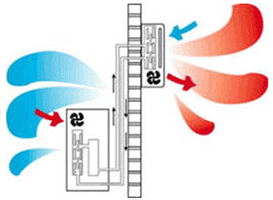
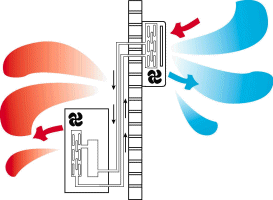

1. Understanding Energy Efficiency
Heat pumps, especially those with inverter technology, are extremely energy-efficient. They use a refrigerant gas like R410a instead of burning fuel, which boasts a Coefficient of Performance (COP) of up to 6:1. Put simply, this means they can be up to six times more efficient than other heaters.

2. Year-Round Comfort
Heat pumps can reverse the refrigerant cycle, extracting warmth from the outdoors and bringing it indoors. This works even on cold days, with temperatures as low as -5°C, -10°C, or even -15°C, depending on the type of system you have. Essentially, heat pumps can both cool and heat your property using a single unit, lowing your energy costs and consumption.

3. How Air Conditioning Works
The concept of air conditioning is to move energy from one place to another. The process requires an indoor unit, an outdoor unit, and some copper piping to connect them. The refrigerant flows from one unit to the other, absorbing heat from one area and releasing it in another, making your building nice and cosy no matter the weather.
To summarise, heat pumps are an energy-efficient and cost-effective solution for your heating and cooling needs. They work by transferring energy from one place to another, which keeps you both warm and cool through the year. Ready to make your space comfortable and efficient? Explore heat pump options today.


